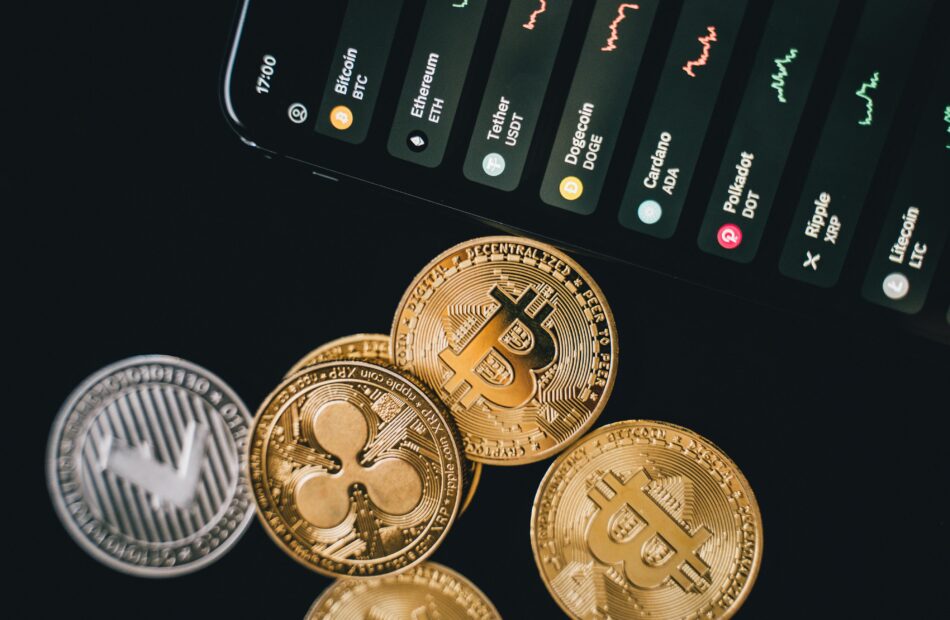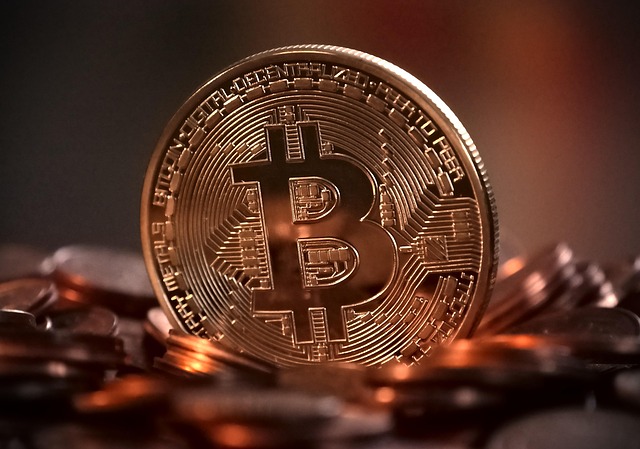DeFi Development Corp adds $11.5M SOL, shares jump 12%
DeFi Development Corporation, formerly known as Janover, is ramping up its Solana treasury strategy following a buyout led by Kraken executives.According to an April 22 announcement, the company added 88,164 Solana (SOL) to its treasury, worth $11.5 million and bringing its Solana stake to $34.4 million.On April 7, DeFi Development Corporation was acquired by a group of former Kraken executives. As part of the deal, the company announced a shift toward crypto, including a rebrand and a Solana-based reserve treasury. Before the transition, Janover operated in the real estate financing space, linking lenders with commercial property buyers.Since the takeover, the company has made multiple purchases of SOL, including a buy of $10.5 million on April 16. With the latest purchase, DeFi Development Corporation’s total holdings stand at 251,842. The company plans to stake the tokens to generate additional yield.As of this writing, shares of DeFi Development Corporation (JNVR) are up 12.83% on the news, according to Google Finance.DeFi Development Corporation’s intraday performance. Source: Google FinanceStaking is the process of locking up cryptocurrency to help secure a blockchain network and earn rewards in return. Solana briefly surpassed Ethereum in total staked value on April 21, with over $53.9 billion worth of SOL staked by more than 500,000 unique wallet holders, yielding an 8.31% annualized return.Crypto treasury strategies gaining tractionSince Michael Saylor’s Strategy began adding Bitcoin (BTC) to its balance sheet in August 2020, more companies have followed suit with crypto treasuries, often seeing a boost in their stock prices as a result.Japanese company Metaplanet announced its Bitcoin treasury in 2024 and recorded a 4800% rise in its share price as of Feb. 10, though it has fallen since then. Semler Scientific, a healthcare technology company, saw a 30% stock price rise after it announced its BTC reserve treasury.Other companies are expanding their digital assets approach to other cryptocurrencies, such as SOL. Upexi, a Nasdaq-listed supply chain firm, recently announced the creation of a SOL treasury to diversify its assets.Magazine: Memecoins are ded — But Solana ‘100x better’ despite revenue plunge
Lawyer hopes Hashflare co-founders can 'self-deport' after sentencing
A lawyer representing one of the co-founders of crypto mining service Hashflare has addressed how their criminal case may move forward after the pair received “self-deport” letters from the US Department of Homeland Security (DHS).In an April 11 filing in the US District Court for the Western District of Washington, Hashflare co-founders Sergei Potapenko and Ivan Turogin reported they had received a DHS letter directing them to “leave the United States” as part of a push by the Trump administration to effect mass deportations. The government letter contradicted orders from Judge Robert Lasnik, who restricted travel for Potapenko and Turogin as part of their bail conditions.In February, the Estonian nationals pleaded guilty to conspiracy to commit wire fraud as part of a deal with authorities. Between 2015 and 2019, the two were responsible for defrauding Hashflare users out of more than $550 million. They also raised $25 million from investors in 2017, claiming they would establish a digital bank called Polybius. The firm was never created.Indicted in October 2022, Potapenko and Turogin were arrested and held in Estonia before their extradition to the US in May 2024. Both have been free on bail since July 2024 but could face up to 20 years in prison each at sentencing.Ordered to leave, forced to stay“[Potapenko and Turogin each] got letters from DHS to their personal email saying ‘deport immediately,’” Reed Smith partner and defense counsel Mark Bini told Cointelegraph. “It caused some angst because [our client and his co-defendant], their conditions of release include that they comply with the law. And here you have this letter saying if you stay in the country, you’re breaking the law. And of course, their bail conditions say they can’t leave the Seattle area.” Related: Russian Gotbit founder strikes $23M plea deal with US prosecutorsThe DHS letters ordering certain people to “depart the United States immediately” were reportedly sent to thousands of immigrants who had used the government’s CBP One app to enter the country legally. However, some citizens reported receiving the same letter in US President Donald Trump’s attempts to effect deportations through his office. Bini initially thought it was a possibility that the US government was suggesting that Potapenko or Turogin “self-deport” to Estonia after the Justice Department issued a memo hinting it would change its enforcement policy in criminal cases involving crypto. The Hashflare co-founders had been expected to remain in the jurisdiction until at least Aug. 14 for their sentencing hearings.“I have not encountered this situation before, where you have essentially two folks in the federal government telling you conflicting things,” said Bini. The attorney added that Potapenko or Turogin now carried letters with them at all times that stated DHS had deferred action on their “self-deportation” for one year in the event that authorities mistakenly tried to detain them and remove them from the country. Though the pair could still receive prison time, Potapenko, Turogin and Hashflare reported returning $400 million in crypto payments to users and “agreed to forfeit their interests in assets that the government froze in 2022.”“We’re going to try and convince the judge to frankly side with DHS and let them self-deport to Estonia to their families because we believe that there was no actual financial harm to the customers of Hashflare,” said Bini. “It’s a weird [case] because for our clients, we want to be deported. Our clients are Estonian. Their families are Estonian.” Magazine: XRP win leaves Ripple and industry with no crypto legal precedent set
Coinbase Derivatives lists XRP futures
Coinbase has listed futures contracts for the XRP token on its US derivatives exchange, the cryptocurrency platform said on April 21.The contracts are overseen by the US Commodity Futures Trading Commission (CFTC) and offer traders “a regulated, capital-efficient way to gain exposure to one of the most liquid digital assets,” the company said in a post on the X platform.Coinbase’s XRP (XRP) futures include standard contracts representing 10,000 XRP and retail-oriented “nano” contracts representing 500 XRP each, or approximately $1,000 as of April 21, according to regulatory filings. The contracts are the latest crypto futures to launch on Coinbase’s derivatives exchange, which also features Solana (SOL) and Hedera (HBAR) futures contracts, both added in February. Source: CoinbaseRelated: Coinbase in talks to buy derivatives exchange Deribit: ReportBurgeoning market segmentSince 2024, US exchanges — including Coinbase, Robinhood and Chicago Mercantile Exchange — have been expanding crypto futures offerings in response to strong demand from retail and institutional investors. Futures contracts are standardized agreements to buy or sell an underlying asset at a future date. They are popular for hedging and speculation because they let traders take long and short positions, often with leverage. Coinbase lists derivatives tied to some 92 different assets on its international exchange and approximately two dozen in the US, according to its website. Its US-traded products include contracts tied to memecoins, such as Dogecoin (DOGE), and commodities, such as oil and gold. Coinbase’s stock performance vs. the S&P 500. Source: JPMorganIn December, Coinbase said derivatives trading volumes soared roughly 10,950% in 2024. The exchange is reportedly in talks to buy Deribit in a bid to expand its derivatives footprint.Coinbase launched its US derivatives exchange in 2022, bringing cryptocurrency futures — including retail-oriented “nano” contracts — to tens of millions of US users.Launched in 2012, XRP Ledger is among the oldest blockchain networks and specializes in payments and decentralized finance (DeFi) applications for institutions. As of April 21, XRP’s market capitalization stands at approximately $120 billion, according to CoinMarketCap. In March, the US Securities and Exchange Commission (SEC) dropped a years-long lawsuit against XRP Ledger’s developer, Ripple, for alleged securities law violations.Magazine: Crypto ‘more taboo than OnlyFans,’ says Violetta Zironi, who sold song for 1 BTC
Unlocking the potential of dormant Bitcoin in DeFi
Opinion by: Amitej Gajjala, co-founder and CEO of KernelDAOBitcoin is the principal asset of the cryptocurrency world and even one of the world’s top 10 most valuable assets, recognized for its role as a store of value. Yet a huge percentage of the Bitcoin (BTC) supply remains dormant for years, meaning the crypto market only works with a fraction of the circulating supply each year. This idle Bitcoin has an enormous amount of untapped financial potential.Bitcoin’s principal narratives are “store of value” and “never sell.” Today’s decentralized finance (DeFi) tools, however, enable yield gain by holding Bitcoin and taking advantage of dormant Bitcoin, which just sits in investors’ wallets and does nothing. Existing dormant Bitcoin is not being fully utilized Dormant Bitcoin has not been used for long periods, usually one or more years. According to Glassnode, as of early 2025, the active supply that has not moved in more than one year is approximately 62%.This Bitcoin is held in wallets that show no activity on the blockchain and remain inactive for various reasons. These could be intentional long-term holding strategies or even permanent loss as a result of negligence or the death of their users. Let’s put aside the rest of the reasons and focus on long-term Bitcoin holding strategies. The existence of this group implies that they could enter the market at any time, producing significant volatility in the price of Bitcoin. Why aren’t we using that Bitcoin in DeFi right now? Activating dormant Bitcoin will make waves in the marketIf large quantities of dormant Bitcoin were to reactivate immediately, it could significantly affect the cryptocurrency market, creating a noticeable event. These movements could dramatically affect Bitcoin’s price in a negative way due to potential selling pressure and influence the market with a significant increase in active circulating supply.Recent: Stablecoin presence key to blockchain legitimacy, says ZachXBTIf the reactivated Bitcoin is, however, reintegrated into productive DeFi ecosystems rather than sold en masse, it could provide liquidity without destabilizing the market. With that amount of active liquidity, Bitcoin would not only be a “store of value” but also a productive asset with utility and application.Let’s look at the announcement of the creation of a Bitcoin strategic reserve in the United States. One of the key points of this reserve is that it will follow budget-neutral strategies without selling the estimated 198,000 BTC held by the government. Those conditions are perfect for putting this Bitcoin into restaking and using it in DeFi to obtain rewards. Just picture all the gains the US could make by using most of its Bitcoin reserves in that way, without selling.We need to explore Bitcoin’s potential in DeFiIntegrating dormant Bitcoin into DeFi platforms offers interesting Bitcoin and decentralized finance opportunities. Bitcoin would encourage transactions and fees on the network to support miners. The total value locked (TVL) in DeFi will be tremendous compared to all the liquidity Bitcoin will add to the DeFi market.Advances like wrapped tokens and crosschain bridges have enabled Bitcoin holders to engage in flash loans, lending, staking, restaking and yield farming on DeFi platforms. The current levels are, however, insufficient and will not be the only way to take advantage of this enormous liquidity injection. As of March 10, Bitcoin’s TVL in DeFi stood at over $5 billion, according to DefiLlama data. This represents only 6% of the TVL of all the current blockchains on the market, with Ethereum the king at 52.56% with $48 billion. If Bitcoin became the new king of TVL in DeFi, it would only need to use some of the dormant Bitcoin mentioned above.In this scenario, Bitcoin will provide more stability to DeFi, as its holders, including institutional and long-term investors, are not prone to selling during market downturns. In addition, activating even a small fraction of currently idle Bitcoin could unlock billions of dollars of liquidity for decentralized finance applications.The best way to use BTC in DeFi is restakingToday, restaking is emerging as an innovative, engaging way to integrate Bitcoin into DeFi while maintaining its appeal as a conservative, secure investment vehicle. Restaking enables holders to stake their assets in decentralized protocols and earn passive income while contributing to the economic security of the network.This mechanism offers several benefits, including passive income with minimal risk and economic security, by supporting the development of new products. It parallels traditional finance by offering predictable returns while preserving capital, which appeals more to conventional investors.Restaking aligns with the conservative mindset typical among many Bitcoin holders, allowing them to participate in innovations within the DeFi space. Restaking is desirable for every Bitcoiner to obtain yield with their reserves.Dormant Bitcoin is a massive opportunity for DeFiDormant Bitcoin is a vast, untapped reservoir within the Web3 ecosystem. By integrating Bitcoin into DeFi platforms today, individual investors and the broader ecosystem will significantly benefit from the increased stability, liquidity and growth opportunities.Opinion by: Amitej Gajjala, co-founder and CEO of KernelDAO.
Bitcoin rally above $100K may follow US Treasury buybacks — Arthur Hayes
Investors seeking Bitcoin exposure may be running out of time to purchase below a six-figure price, as US Treasury buybacks may signal the next leg up for the world’s first cryptocurrency.This might be the “last chance” to buy Bitcoin (BTC) below the $100,000 mark, according to Arthur Hayes, co-founder of BitMEX and chief investment officer of Maelstrom.“Seriously fam, this might be the last chance you have to buy $BTC < $100k,” Hayes said in an April 21 X post, hinting at incoming “treasury buy backs” as the “Bazooka” for Bitcoin’s price trajectory.Source: Arthur HayesTreasury buybacks refer to the US Treasury Department repurchasing its outstanding bonds from the open market to increase liquidity, manage federal debt or stabilize interest rates.These operations can inject liquidity into the financial system, often benefiting risk assets like Bitcoin.Related: Bitcoin up 33% since 2024 halving as institutions disrupt cycleOther analysts predicted that the growth of the fiat money supply will be Bitcoin’s main catalyst in 2025.BTC projection to $132,000 on M2 money supply growth. Source: Jamie CouttsThe growing money supply may push Bitcoin’s price above $132,000 before the end of the year, according to Jamie Coutts, chief crypto analyst at Real Vision.However, global trade war concerns may limit investor appetite until the US and China reach a trade agreement.Related: Metaplanet tops $400M Bitcoin holdings with new $28M purchaseUS dollar sinks to 2022 low, Bitcoin gains momentumBitcoin briefly rose above $87,700 for the first time in nearly three weeks, since US President Donald Trump announced reciprocal import tariffs on April 2.“Looks like Bitcoin is pumping on continued Dollar weakness,” wrote André Dragosch, the European head of research at Bitwise, adding that the US Dollar Index “just touched the lowest level since March 2022.”BTC, DXY, 1-year chart. Source: Cointelegraph/TradingViewThe weakening US dollar may reinforce Bitcoin’s appeal as a safe-haven asset, Ryan Lee, chief analyst at Bitget Research, told Cointelegraph, adding:“Strong volume and technical confirmation from a descending wedge breakout suggest a potential test of the $90,000 resistance, with macro factors like a weakening dollar and rising gold correlation reinforcing BTC’s appeal as a hedge.”Despite the recent correction, Japanese and UK-based investment firms are investing hundreds of millions into Bitcoin, signaling continued institutional adoption that may accelerate Bitcoin’s four-year cycle.This article does not contain investment advice or recommendations. Every investment and trading move involves risk, and readers should conduct their own research when making a decision.Magazine: SCB tips $500K BTC, SEC delays Ether ETF options, and more: Hodler’s Digest, Feb. 23 – March 1
Metaplanet tops $400M Bitcoin holdings with new $28M purchase
Japanese investment firm Metaplanet has increased its Bitcoin holdings to more than $400 million after its latest purchase.Metaplanet acquired 330 Bitcoin (BTC) for $28.2 million at an average price of $85,605 per BTC, bringing the investment firm’s total holdings to 4,855 Bitcoin worth $414 million, according to an April 21 post from Simon Gerovich, the CEO of Metaplanet.The firm’s Bitcoin yield surpassed 119% year-to-date after its latest investment.Source: Simon GerovichMetaplanet issued 2 billion Japanese yen ($13.3 million) of bonds to buy more Bitcoin on March 31, Cointelegraph reported.Related: UK firm buys $250M Bitcoin as analysts eye quiet Easter weekendThe $414 million in Bitcoin holdings make Metaplanet Asia’s largest and the world’s 10th-largest corporate Bitcoin holder, Bitbo data shows.Source: Bitbo According to Enmanuel Cardozo, a market analyst at the asset tokenization platform Brickken, the growing institutional presence of firms, such as Strategy and Tether, is accelerating the four-year Bitcoin cycle.“That puts the bottom around Q3 this year and a peak mid-2026, but I think we might see things move it a bit sooner because the market’s more mature now with more liquidity,” the analyst told Cointelegraph.Related: $1T stablecoin supply could drive next crypto rally — CoinFund’s PakmanMetaplanet plans to reach 21,000 BTCThe latest acquisitions are part of Metaplanet’s plans to accumulate 21,000 BTC by 2026, aligning with its mission to drive Bitcoin adoption across Japan.Often dubbed “Asia’s MicroStrategy,” Metaplanet has drawn comparisons to Michael Saylor’s company Strategy, which continues to top the list of public Bitcoin holders.Metaplanet’s latest investment was announced a week after the latest purchase by Strategy, the world’s largest corporate Bitcoin holder.Source: Michael SaylorStrategy bought 3,459 BTC for $285.5 million at an average price of $82,618 per BTC, bringing its total holding to 531,644 BTC acquired for a cumulative $35.92 billion, Cointelegraph reported on April 14.Despite tariff uncertainty limiting risk appetite among traditional and crypto investors in the short term, analysts are optimistic about Bitcoin’s price trajectory for the next decade.Bitcoin may surpass $1.8 million by 2035, driven by its growing recognition as a superior savings technology, set to rival or surpass gold’s over $21 trillion market capitalization, Joe Burnett, director of market research at Unchained, told Cointelegraph during the Chainreaction live show on X.Magazine: SCB tips $500K BTC, SEC delays Ether ETF options, and more: Hodler’s Digest, Feb. 23 – March 1
Bitcoin up 33% since 2024 halving as institutions disrupt cycle
Bitcoin holders are celebrating one year since the 2024 Bitcoin halving by praising BTC’s resilience amid a global trade war and suggesting an accelerated market cycle due to a growing institutional presence.The 2024 Bitcoin halving reduced block rewards from 6.25 Bitcoin (BTC) to 3.125 BTC, slashing new BTC issuance in half.Despite rising concerns over a global trade war and escalating tariff tensions between the United States and China, BTC has climbed more than 33% since April 2024, Cointelegraph Markets Pro data shows.BTC/USD, 1-year chart. Source: Cointelegraph Markets Pro“So, even though Bitcoin’s showing resilience, I think the mix of past experiences, economic uncertainty, and this selling pressure is keeping investors on the sidelines, waiting for a stronger green light before they jump in,” said Enmanuel Cardozo, a market analyst at asset tokenization platform Brickken.Cardozo added that institutional investment from firms such as Strategy and Tether could speed up Bitcoin’s traditional four-year halving cycle. He added:“For the 2024 halving in May, that puts the bottom around Q3 this year and a peak mid-2026, but I think we might see things move it a bit sooner because the market’s more mature now with more liquidity.”However, Bitcoin’s trajectory remains tied to broader monetary policy, the analyst added. He said a US Federal Reserve rate cut in May or June may “pump more money into the system and push Bitcoin up faster.”The halving is a built-in feature of the Bitcoin network that assures Bitcoin’s scarcity, which is considered one of BTC’s defining monetary characteristics.Related: Crypto, stocks enter ‘new phase of trade war’ as US-China tensions riseETFs and institutions fuel faster cycleInstitutional adoption and Bitcoin exchange-traded funds (ETFs) may be contributing to a shorter market cycle, according to Vugar Usi Zade, chief operating officer at Bitget exchange.Continued institutional buying, including by Bitcoin ETFs, paired with Bitcoin’s rising scarcity, may accelerate Bitcoin’s rise to new highs, he told Cointelegraph.“With growing scarcity triggered by the halving, Bitcoin will likely retest its all-time high if it breaches the $90,000 mark in the coming weeks,” Usi Zade said. “While the halving offers a good basis for growth based on demand and scarcity, the timeline for impact on price can vary over time.”He noted that Bitcoin’s growth remains closely tied to traditional financial markets and investor sentiment.Related: Bitcoin speculative appetite declines as investors seek safetyBitcoin reached a new all-time high above $109,000 on Jan. 20, 273 days after the 2024 Bitcoin halving, signaling an accelerated market cycle.Source: JelleIn comparison, it took Bitcoin 546 days to reach an all-time high after the 2021 halving, and 518 days after the 2017 halving, according to data shared by popular crypto trader Jelle, in an April 8 X post.Magazine: Bitcoin’s odds of June highs, SOL’s $485M outflows, and more: Hodler’s Digest, March 2 – 8
Now is not the time for a restaking revival
Opinion by: Alon Muroch, founder of SSV LabsEven though Ethereum remains a leader in terms of total value locked (TVL), things aren’t looking great. Network activity is hemorrhaging, and momentum is slipping. Ethereum has become locked in a fight for its future. Without meaningful change, Ethereum risks becoming inaccessible to the builders and users it needs to thrive. Ethereum needs fresh ideas to bolster the ecosystem out of its slump, unify it, and genuinely support innovation.Enter based applications (bApps), which are any application or service that uses the Ethereum validator set for security. Inspired by the based movement, bApps enable any project to bootstrap directly from the Ethereum layer 1 (L1), enabling interoperable, scalable and cost-effective development.High stakes and high costsThe recent decline in network activity highlights a deep issue across Ethereum, and it boils down to UX. The race to scale a blockchain isn’t just about TVL and transactions per second (TPS). It’s about the experience of users and developers who co-create the ecosystem. Ease of development and interoperable developer ecosystems and applications are paramount. Improving the developer experience is crucial for improving user experience, which drives adoption.Today, builders are presented with two options. The first and more popular one is restaking, which has become the default mechanism for bootstrapping new services by locking up validators’ withdrawal keys or large amounts of capital for security. That leaves teams with only one other inconvenient alternative: self-bootstrapping. Building a validator set from scratch is resource-heavy, technically complex and often starts off centralized. Both choices are limiting for builders and don’t solve the fragmentation problems we see today in Ethereum.It is not just builders but validators that are affected by this system. In the current restaking setup, validators who want to earn more yield by supporting new services must restake, lock up their withdrawal keys, and take on additional risk. By locking up withdrawal keys to secure applications with slashable capital, validators are exposed to cascading risks, which, at scale, could affect Ethereum itself — a core departure from Ethereum’s founding vision.bApps are more securebApps provide a third, more accessible option for self-bootstrapping and restaking. Using based security infrastructure drastically lowers entry barriers for any size protocol to build securely and sustainably, all while preserving the traditional network effects of Ethereum. Validators are incentivized to join through risk-free yield opportunities; developers can affordably access security to build; and users benefit from a unified and interoperable ecosystem.Recent: SSV Network to create ‘based’ apps infrastructure for EthereumMission-critical services like rollups, bridges and oracles don’t need to reinvent the wheel. They simply plug into an existing, trusted security model. Using Ethereum validators as a primary security base, any out-of-protocol service can inherit the Ethereum L1’s decentralization and Sybil resistance. It’s also possible to extend this paradigm beyond Ethereum, enabling other L1 validators to secure bApps. This potentially turns bApps into a marketplace for multichain security, dramatically reducing the complexity (and cost) for developers and raising the bar for the entire ecosystem, offering a “based” path forward.bApps empower validators to earn more with their existing stake. By primarily using the validator principle as non-slashable security, validators can opt into many services through their existing Ethereum validator role without needing to restake or supply extra stakes. This would encourage broader validator participation, especially from smaller or more risk-averse operators, which is excellent considering solo stakers are an important ecosystem pillar.bApps unlock scalabilitybApps also revolutionize Ethereum’s current bootstrapping ecosystem, which relies heavily on slashable capital. In restaking, one participant’s gain may directly correspond to another’s loss, creating a zero-sum model. Building a competitive dynamic where participants must add or reallocate resources instead of sharing them, consequently working against new entrants by creating competition for limited attention and resources.The based economy, conversely, promotes an infinite-sum game, transforming competition for resources into a synergistic environment where new applications, services and participants increase the overall value of the platform. Each new validator increases security for bApps, and each new bApp provides new opportunities for validators. This infinitely scalable model breaks free from the limitations of a zero-sum model, enabling seamless bootstrapping, rewarding innovation and building more secure, inclusive and resilient ecosystems.Unifying Ethereum’s fractured ecosystemFor Ethereum to grow, fragmentation has to be addressed. Builders need building blocks, which need to be secure, low-cost, interoperable and scalable. Think about what cloud computing did for Web2. BApps offer just that — by introducing an infinite-sum game, they unlock scalability and provide a safe and affordable way to bootstrap with Ethereum’s proof-of-stake network.If Ethereum is to be the foundation of tomorrow’s decentralized world, it must empower the builders of today. The way forward is to solve Ethereum’s user and developer experience problem with a based infrastructure. Going based is the clear solution.Opinion by: Alon Muroch, founder of SSV Labs. This article is for general information purposes and is not intended to be and should not be taken as legal or investment advice. The views, thoughts, and opinions expressed here are the author’s alone and do not necessarily reflect or represent the views and opinions of Cointelegraph.
TRUMP tokenholders face 90% decline from peak as unlock begins
TRUMP tokenholders face steep losses as the first vesting unlock goes live on April 18, releasing 40 million tokens, worth roughly $309 million, into circulation at a 90% discount from its peak. The unlocked tokens account for 20% of the current circulating supply and could introduce fresh volatility as a previously illiquid portion of the supply hits the market. According to CoinGecko, the TRUMP token price has fluctuated between $7.46 and $7.83 in the past 24 hours. April 18 marks the first unlock event for the TRUMP token, with steady, smaller unlocks following from that date.TRUMP emission schedule. Source: GetTrumpMemesThe TRUMP token is down 89.5% from its all-time high of $73.43 recorded on Jan. 19, just two days after launching ahead of US President Donald Trump’s inauguration. The token’s value collapsed in the weeks following its debut, with over 800,000 wallets suffering a total of $2 billion in losses, according to estimates from blockchain analytics firm ChainalysisGains or losses are only realized upon sale, meaning holders won’t incur actual losses unless they choose to sell their tokens. According to the token’s website, the unlocked tokens will belong to the “Creators and CIC Digital LLC.” Related: Donald Trump’s memecoin generated $350M for creators: ReportWho owns the TRUMP token supply?According to the TRUMP token’s website, two organizations affiliated with Trump’s business umbrella own 80% of the token supply: CIC Digital LLC and Fight Fight Fight LLC. A report from MarketWatch notes that CIC Digital, an affiliate of The Trump Organization, was placed in a trust by the time of Trump’s 2024 financial disclosures to the US Federal Election Commission. CIC Digital had previously been linked to Trump’s non-fungible token collections.Related: What is TRUMP? Donald Trump’s billion-dollar memecoinFight Fight Fight LLC is another Trump-affiliated business. It is co-owned by CIC Digital and another company, Celebration Cards LLC, which was formed in Wyoming by Andrew Pierce. Fight Fight Fight LLC is synonymous with the Trump slogan “Fight Fight Fight,” which he shouted into a camera during an assassination attempt during a campaign rally.The April 18 unlock represents a “cliff” — a large, one-time release of tokens. While there are other cliff unlocks ahead, many tokens will be released at a steadier pace. For example, between April 19 and 21, around 493,000 tokens will unlock daily, according to DropsTab.Magazine: Trump’s crypto ventures raise conflict of interest, insider trading questions
Saylor, ETF investors’ ‘stronger hands’ help stabilize Bitcoin — Analyst
Bitcoin’s relatively stable price movements despite macroeconomic uncertainty is likely due to resilient spot Bitcoin ETF holders and Michael Saylor’s firm continuing to buy aggressively, according to a Bloomberg analyst.“The ETFs and Saylor have been buying up all ‘dumps’ from the tourists, FTX refugees, GBTC discounters, legal unlocks, govt confiscations and Lord knows who else,” Bloomberg ETF analyst Eric Balchunas said in an April 16 X post.Bitcoin ETF holders hold despite market volatilityBalchunas pointed out that spot Bitcoin (BTC) ETFs have attracted $131.04 million over the past 30 days and are up $2.4 billion since Jan. 1. Balchunas called this “impressive,” noting it helps explain why Bitcoin has “been relatively stable.”“Its owners are more stable,” Balchunas said. Balchunas said Bitcoin ETF investors have “much stronger hands than most people think.” He said this “should” increase the stability and lower Bitcoin’s volatility and correlation in the long term. As of April 16, Bitcoin ETFs saw a total of $131.04 million in inflows over the past 30 days. Source: Eric BalchunasSaylor’s firm, Strategy, made its latest Bitcoin purchase on April 14, acquiring 3,459 BTC for $285.5 million at an average price of $82,618 per coin. According to Saylor Tracker, Strategy holds 531,644 Bitcoin at the time of publication.The Bitcoin Volatility Index, which measures Bitcoin’s volatility over the previous 30 days, is at 1.80% at the time of publication, according to Bitbo data. At the time of publication, Bitcoin is trading at $84,610, according to CoinMarketCap data. Over the past 30 days, Bitcoin has traded between $75,000 and $88,000 amid macroeconomic uncertainty primarily driven by US President Donald Trump’s imposed tariffs and ongoing questions about the future of US interest rates. Despite this, Bitcoin has remained above its previous all-time high of $73,679, first surpassed in November.Bitcoin is trading at $84,610 at the time of publication. Source: CoinMarketCapParticipants in the broader financial market have also expressed surprise at Bitcoin’s relative strength in recent times, particularly in comparison to the S&P 500.Stock market commentator Dividend Hero told his 203,200 X followers on April 5, after Trump’s “Liberation Day,” that he has “hated on Bitcoin in the past, but seeing it not tank while the stock market does is very interesting to me.”Related: When gold price hits new highs, history shows ‘Bitcoin follows’ within 150 days — AnalystThis article does not contain investment advice or recommendations. Every investment and trading move involves risk, and readers should conduct their own research when making a decision.










